
Sun-gilded skimmer, Padre Island National Seashore / Rebecca Latson
… Or on a branch, or in the water, or on the ground, or wherever you happen to see a bird in any of the National Park System units.
For a number of years, the Traveler featured a regular column titled “Birding In The Parks,” by Kirby Adams. These wonderful articles by Adams provided the reader with examples of birds one might see when visiting a particular national park or other protected land. Now, I’m not a birder, nor am I a hardcore bird photographer, and I generally don’t think to research what kind of birdlife I might see during my travels (my bad). That said, if I can catch a photo of a bird, I’ll do it, because I know our avian friends help flesh out the story of a national park.
This month’s column is not so much about deliberately seeking, staking out a spot, and using a mega-telephoto lens to photograph a specific bird as it is about getting good photos of whatever bird you happen to see with whatever lens you have on your camera as you hike the trails and stop at the overlooks of national parks and other NPS units.
Gear
Tripod – While I highly recommend a tripod because I always carry one along, I do admit to often handholding my camera while photographing birds on the fly (seriously, no pun intended). Handholding my camera works better for me because I feel I have better range of motion. Yes, there is this thing called a gimbal head that attaches to your tripod just like a panhead or a ballhead. Gimbals allow for quick movement, and I do make use of that if I plan on visiting a locale inhabited by lots of birds. However, tripods with gimbal heads are heavy.
Telephoto Lens – The telephoto I use most is the 100-400mm lens. It’s a versatile lens allowing me the ability to achieve nice close-ups of birds and other wildlife in addition to capturing some lovely landscapes, believe it or not. I’ve also used my much heavier 200-600mm Sony lens, but not as often. It’s a large lens and takes up space in my camera pack. On occasion, I’ve used a 24-105mm lens if that’s the only thing I’ve got handy.
Standard Lens – There are times when I just am not carrying a telephoto with me, which means I cannot get a decent close-up of the birds. I may only have a 24-70mm lens on my camera. In those instances, I opt to shoot a landscape that includes the birds in the composition. It’s a lovely way to show a bird’s environment.

Pelicans cruising the currents at Rialto Beach, Olympic National Park / Rebecca Latson
Camera – If the bird or birds are relatively stationary, then any camera should provide you with nice images. If the bird or birds are mobile, your best camera choice is an SLR with a relatively fast fps (frames per second) speed anywhere from 5-to-10+ fps. The higher the fps speed, the better.
Techniques
Burst Method - Regardless of what camera you use, application of the “burst method” is a must when photographing birds in movement. The longer your finger presses that shutter button, the more clicks you get (the burst method), and the greater chance of capturing at least one perfect, clear shot.
Depth of Field – I was perusing an online question-and-answer site regarding complete focus on a bird’s face if you have zoomed in closely to it. The answer used the words “the canonical pose of a bird is sideways …,” which means if you want a totally sharp bird face, then a bird profile is the way to go. However, you might focus in on a very gregarious bird that doesn’t mind facing you (like a jay bird, raven, or crow – all corvids, btw) or a bird that is so still you might think it’s a statue and not a living creature (like a heron or egret watching the water for its prey, or an owl sitting upright in a hollow tree staring back at you).
These situations allow for you to capture some great head shots but, after you’ve begun reviewing them on your computer, you might notice some images where the entire bird is in focus, except for the beak, or vice versa, where the beak is nice and sharp but the rest of the bird is out of focus. The culprit is “depth of field” (DOF), which is the distance between the closest and farthest objects in a photo. Depending upon where you point your camera, the auto focus is going to zone in on either the beak, or the face behind the beak. Some cameras have face detection capability, which might help.
While I don’t want to get into big technical specifics, you might also try using a smaller aperture like, maybe, f/9 or f/11. A faster shutter speed might help, as well, but you’ll need to take your camera off of its auto mode and put it on manual or shutter / aperture priority. You could also use Live View to get your subject in focus. Zooming out a little bit, then capturing the shot and cropping it later while editing the image can also provide an overall sharper image. What you might want to do, if you are serious about it, is play around with these things: smaller aperture, faster shutter speed, Live View, and zooming out then cropping during the edit phase. This article I found online may prove helpful to you in this respect.
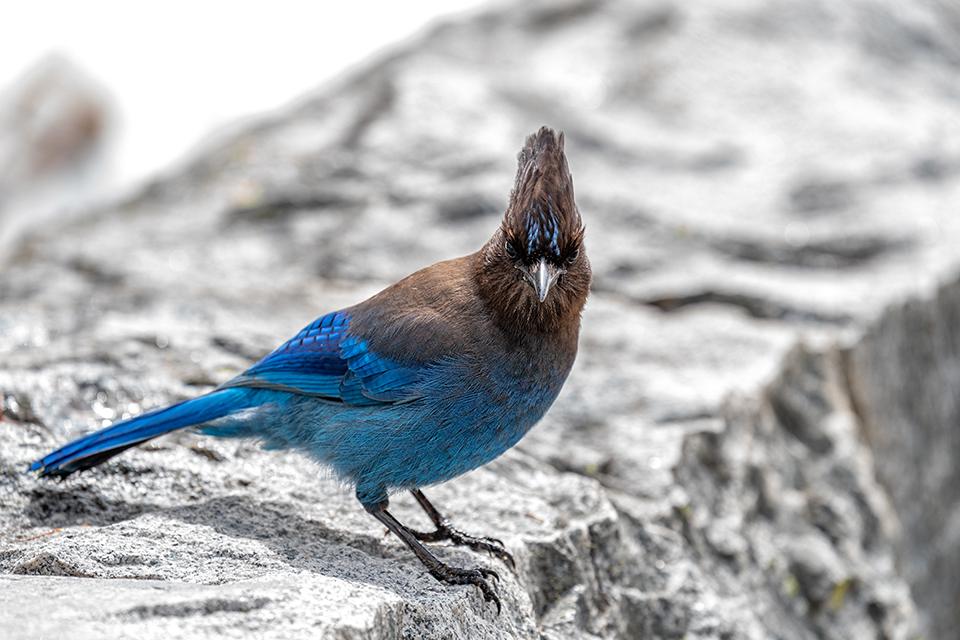
You lookin' at me? Steller's jay, Mount Rainier National Park / Rebecca Latson
In addition to fleshing out your park visit with images of the avian inhabitants, photographing birds teaches you about their habits, like the image below of the raven on a very hot day with its beak open. According to Audubon.org, that is called “gular fluttering” and is one way birds regulate their temperatures to keep cool.

Staying cool on a hot day, Petrified Forest National Park / Rebecca Latson
You can also capture birds striking funky poses or precariously balancing at the very tip top of a tree.

Steller's jay acrobatics, North Rim, Grand Canyon National Park / Rebecca Latson

A precarious perch on a tall tree, Mount Rainier National Park / Rebecca Latson
You might even be able to see geographic variations within a bird subspecies, like coastal (Pacific Coast from Alaska to southwestern British Columbia) vs. interior Steller’s jays. The first image is of a Steller’s jay photographed in Mount Rainier National Park. Note the blue streaks over the eyes.

A stellar shot of a Steller's jay, Mount Rainier National Park / Rebecca Latson
This image of a Steller’s jay was captured during a visit to the North Rim of Grand Canyon National Park, much further inland. Note the white streaks over the eyes.

Steller's jay, North Rim, Grand Canyon National Park / Rebecca Latson
Even if you don’t photograph a bird, you might photograph evidence of a bird’s lifestyle

A bird's nest in the cholla cactus, Big Bend National Park / Rebecca Latson
Now, my usual method of operation is to take the photo, and upon returning home from my trip, seek identification using my Sibley Guide to Birds, which I love (I actually met the author during a short stay in Denali National Park and Preserve, and he’s super-nice). Sometimes, though, I just can’t seem to find a correct i.d., in which case I usually go for some generalized caption for my bird photo (like “bird on a fence” or “soggy grouse”). Sometimes, too, I misname the bird. I’d much rather be able to put a correct name to a face, so if you ever see a generalized caption with a bird image (or an incorrectly named bird) in one of my articles, please don’t hesitate to write in the commentary box at the end of the story what the bird is actually named. This helps me learn more about the bird and I appreciate your help.
Below are some bird images I’ve captured in various national parks visited.
Acadia National Park, Maine

Seagulls sunning themselves on the rocks, Acadia National Park / Rebecca Latson
Big Bend National Park, Texas

The resident road runner in the Chisos Mountains Lodge parking lot, Big Bend National Park / Rebecca Latson

Say's phoebe fledgelings, Big Bend National Park / Rebecca Latson
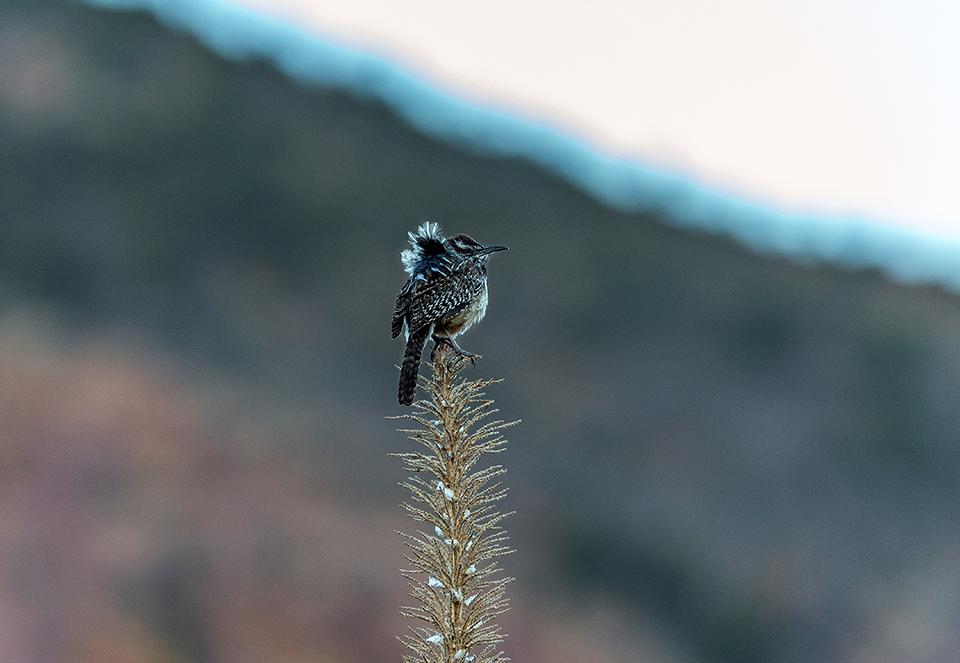
Cactus wren, Big Bend National Park / Rebecca Latson
Bryce Canyon National Park, Utah

Western bluebird of happiness, Bryce Canyon National Park / Rebecca Latson
Mount Rainier National Park, Washington
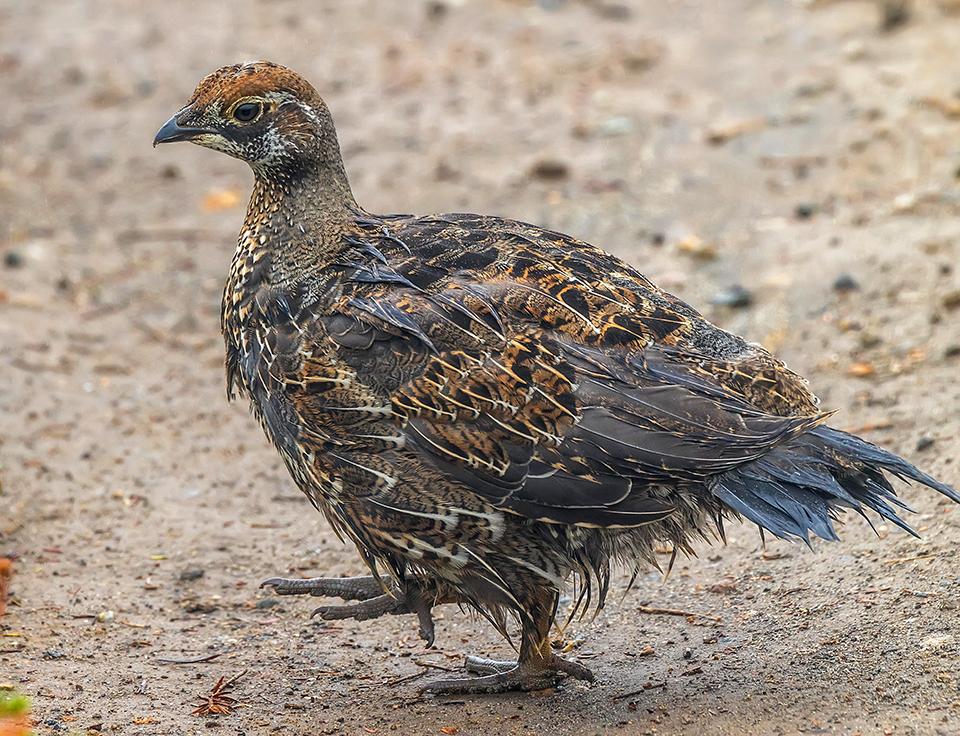
A rain-soaked blue grouse chick, Mount Rainier National Park / Rebecca Latson

A little Canada jay posing for the photographer, Mount Rainier National Park / Rebecca Latson
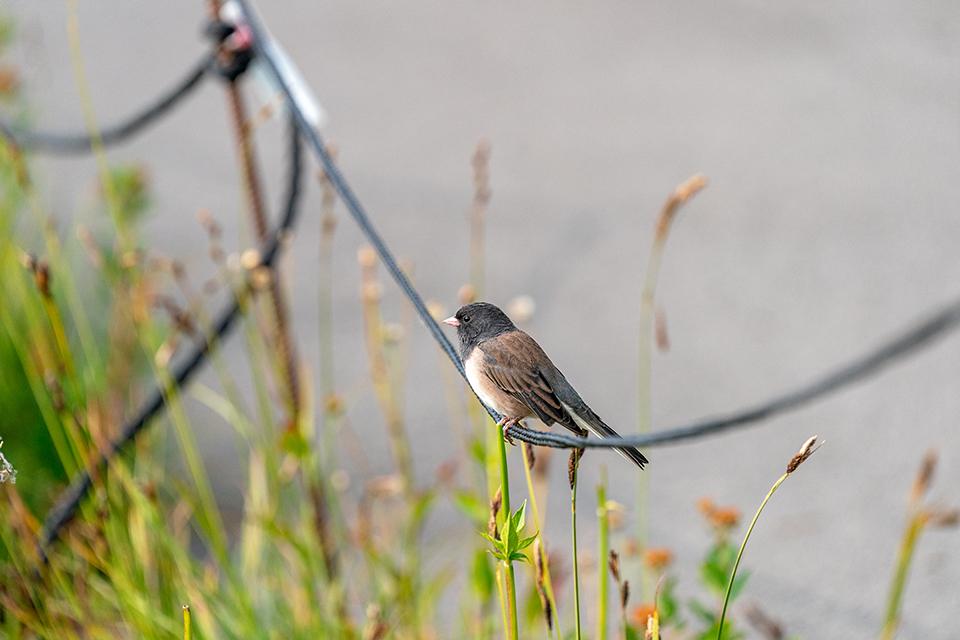
A dark-eyed junco practicing its high-wire act, Mount Rainier National Park / Rebecca Latson
Glacier National Park, Montana

Paddling backwards on Fishercap Lake, Glacier National Park / Rebecca Latson
Grand Teton National Park, Wyoming

Dusky grouse on display, Grand Teton National Park / Rebecca Latson

A pelican cruising the Snake River, Grand Teton National Park / Rebecca Latson
Katmai National Park and Preserve, Alaska

Bald eagle looking for lunch on the Brooks River, Katmai National Park and Preserve, Rebecca Latson
Lake Clark National Park and Preserve, Alaska

Just a couple of eagles checking things out, Lake Clark National Park and Preserve / Rebecca Latson
Olympic National Park, Washington
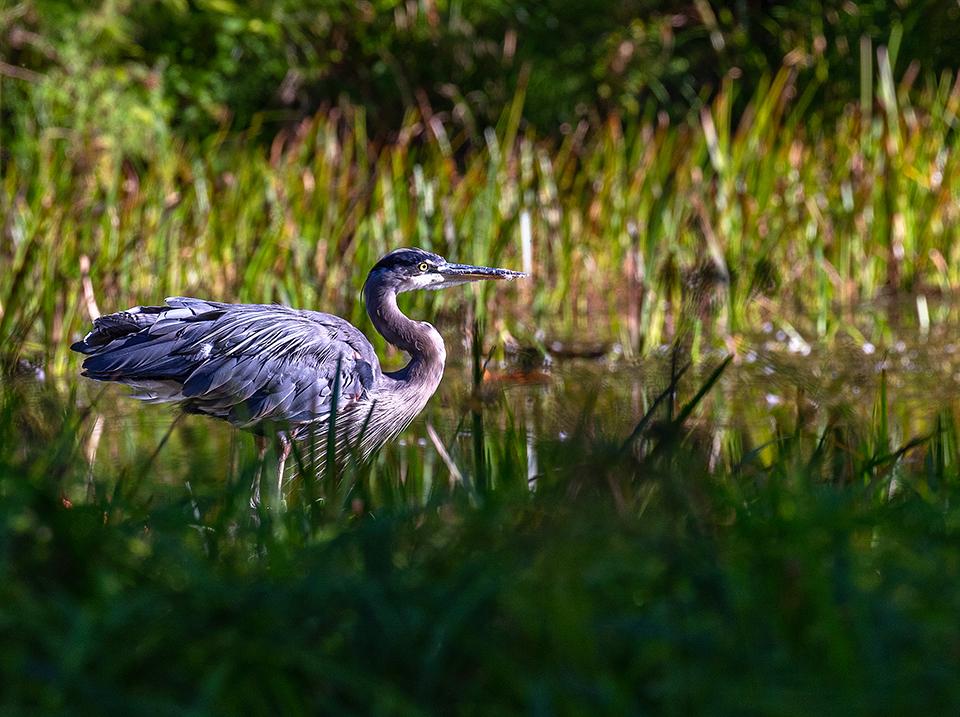
A heron in the Hoh Rainforest, Olympic National Park / Rebecca Latson
Padre Island National Seashore, Texas
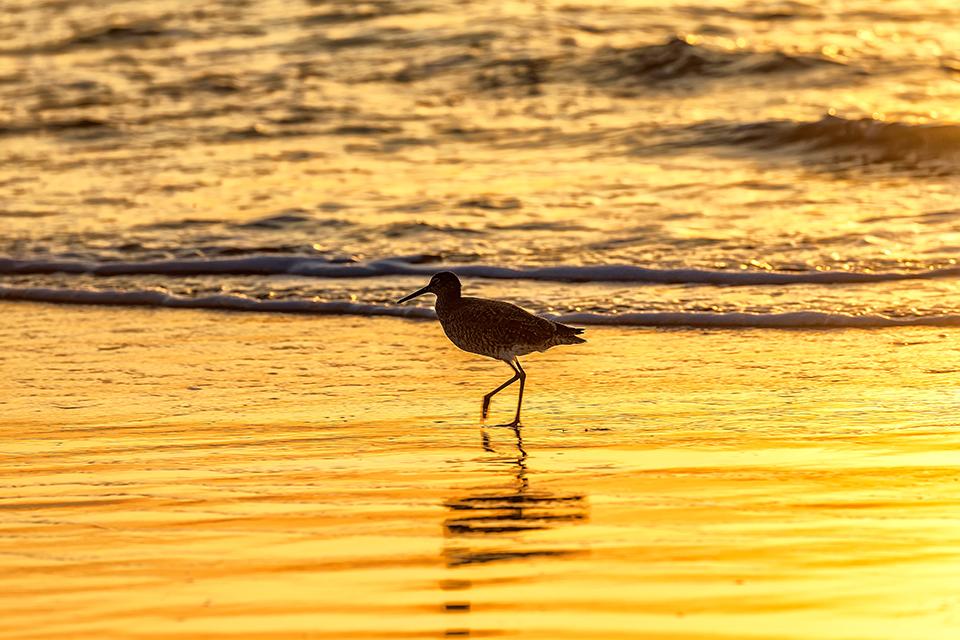
A willet's morning breakfast run, Padre Island National Seashore / Rebecca Latson

LOL says the laughing gull, Padre Island National Seashore / Rebecca Latson

A couple of sandwich terns, Padre Island National Park / Rebecca Latson
Yellowstone National Park, Wyoming

Canada goose coming in for a landing, Yellowstone National Park / Rebecca Latson

A black-billed magpie, Yellowstone National Park / Rebecca Latson

Staying warm near a steaming hot spring, Yellowstone National Park / Rebecca Latson
Zion National Park, Utah
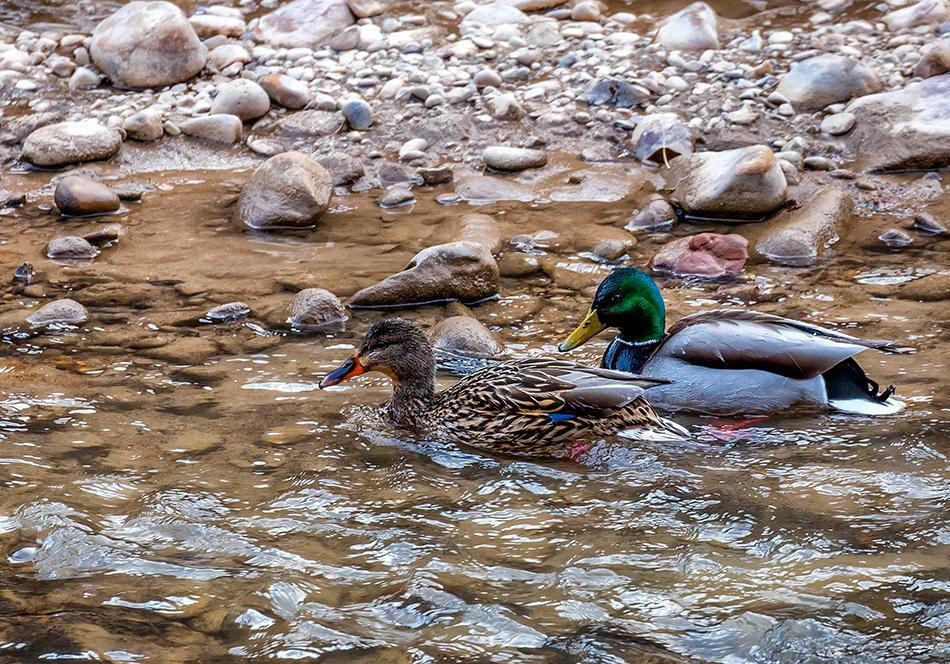
A mallard couple on the Virgin River, Zion National Park / Rebecca Latson

A perfect profile of a wild turkey, Zion National Park / Rebecca Latson
Hopefully, these tips / techniques help you a little bit with your bird photography. You don’t have to be an expert birder or specialize in avian photography to get cool shots of birds you happen upon during a national park trip. Birds are part and parcel of our parks and protected lands, and you can learn a lot about a bird just from the images you capture.



Comments
As always Rebecca, very well written and photographed!! Thanks!!
Your bird photos are incredible. Thanks for sharing. I recently saw my first pileated woodpecker, and I wish you had been there to take pictures for me. There was only so much I could do from a distance my aging iPhone.
thanks, Rebecca, i am learning a lot from your narratives and beautiful photography!